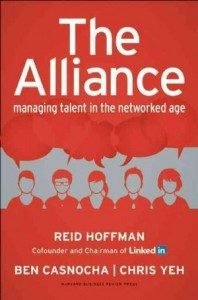Written by Melissa Anzman

Based on some of the responses from the 2-question survey about what you want us to create this year, (have you taken it yet? If not, here's the link), I was excited to see learning more tactical ways to move your career forward, was on the list.
One that grabbed my immediate attention, likely since I absolutely loathe them myself, is a request to learn all about cover letters. So I'm going to pull the HR curtain back and help you use these cover letter tactics to move your career forward this year.
Do I Need a Cover Letter?
Let's get this out of the way first: yes, you absolutely need a cover letter. I hate to give you that advice, but it's a necessary component of your resume toolkit. Cover letters are used in different ways depending on who the recruiter and hiring manager are, but they are important because they allow you to provide additional information as to why you are the right candidate for the role, and they can be used when a recruiter is on the fence about your candidacy.
Bottom line - you need a cover letter and it needs to shine, but you shouldn't be spending a bunch of time on it.
How to Write A Cover Letter
The cover letter goes in the body of your email.
I’m not sure how or why so many people get this wrong, but do not attach your cover letter… anywhere. When you apply via email, your email IS your cover letter – so put all of the goodies in the actual body of the email.
When you are applying via online program such as Taleo or Brassrings, I recommend pasting your cover letter into the space provided when you are confirming your documents, versus doing it as an upload. This way, you know exactly which cover letter you’ve attached and helps alleviate another blunder.
A hiring manager or recruiter is not going to waste time opening another document, so make it as easy as possible for them to get a snapshot of what you bring to the table.
Have three simple and short paragraphs –that’s it.
- Paragraph one: tell the recruiter who you are, where you found the position, which position you are applying for and one engaging fact.
- Paragraph two: your differentiators – what makes you the best candidate for the job; what skills and/or experience do you have that directly relates to the position posted that is not highlighted verbatim on your resume.
- Paragraph three: leave the recruiter with one fun or interesting nugget to remember you by and how and when you can be contacted.
Don’t say “I’m the best candidate for this job”
The recruiter is already assuming you feel you are the best candidate for the job, since you’ve decided to apply. Instead, SHOW all of the ways you are the best fit – what have you done that would support that statement, what else? Keep digging deeper until you are sure that your dad (or insert another non-industry adult) would understand your accomplishments, without knowing you personally.
For example:
- Tell: I was the top salesman at the company.
- Show: I was ranked 1 across the 33 sales people at the company, increasing profits over 13% which equated to $30,000 of new business.
See the difference? The “Tell” does not provide a reference point, leaving the recruiter left asking… so what? When you show, the recruiter is able to see the significance of your achievement.
Remove the gimmicks, insults, and superlatives.
If you’re making the recruiter roll their eyes, you are going in the "no pile." They don’t want to hear what your colleagues say about you, or how great your parents think you are. They want to see actual results – “I launched two HR departments at small companies which resulted in X, Y, and Z. This experience will directly correlate with the change management initiative responsibilities you’ve included in the job description.”
Your tone should be professional, concise, and to the point. And above all else, it should be fact. Your cover letter (or any job-seeking materials) should be rooted in fact, not smoke and mirrors.
If you include items in your resume that seem too good to be true (I am the best at Sales, better at Research and Development, and top-achiever in Marketing), you will be overlooked – even if it’s true.
Be consistent about your cover letter topic so it doesn’t sound like BS.
Remember, the recruiter wants to be friends - so make it as easy as possible for them to connect with you as a person.
Your cover letter should be specific to each position.
While I also believe in tweaking your resume for each application (if applicable), updating your cover letter for each application is a must. There is no excuse for you not to include only relevant information here – address the hiring manager properly, if you are applying directly, include the company name and the correct position title, and be sure that you address specific accomplishments from the required skills.
No one cares about the classes you took and other miscellaneous information.
Being a new grad is ok – hiring managers have all been there too. But when you list “relevant coursework” in your cover letter, or even worse – on your resume, it looks like you haven't "accomplished" work yet.
Everyone knows that real life experience vastly differs from anything you have learned in a classroom.
You are wasting valuable space in your cover letter when discussing “I got an A in Accounting,” or “I may not have real life experience, but I took many business courses in college.”
These facts may help you when on the job, but it’s more important for you to SHOW how you utilize the skills you have learned.
Have some per-son-ality, you’ve got personality…
(Did you sing along to that or did I out-nerd all of you?)
A boring form letter will not cut it anymore. Let your unique voice shine through.
Your cover letter should be written in first person (no references like “Anzman does” or Melissa can”) and should come across as though you’re in an interview – condensed into three short paragraphs.
Boring is easily overlooked but obnoxious will not win you any friends either. Be YOU, write about YOU, SHOW the hiring manager what YOU bring to the table, and you will have instant cover letter personality.
We’d love to hear from you in the comments below: What’s one thing you will do today to improve your cover letter?
About Melissa
Melissa Anzman is the creator of Launch Your Job where she equips ambitious leaders with practical ways to grow their career. She is the author of two books: How to Land a Job and Stop Hating Your Job. Follow her @MelissaAnzman.












 Jenny Blake is the author of
Jenny Blake is the author of 

 At first glance,
At first glance, 


 Written by
Written by 